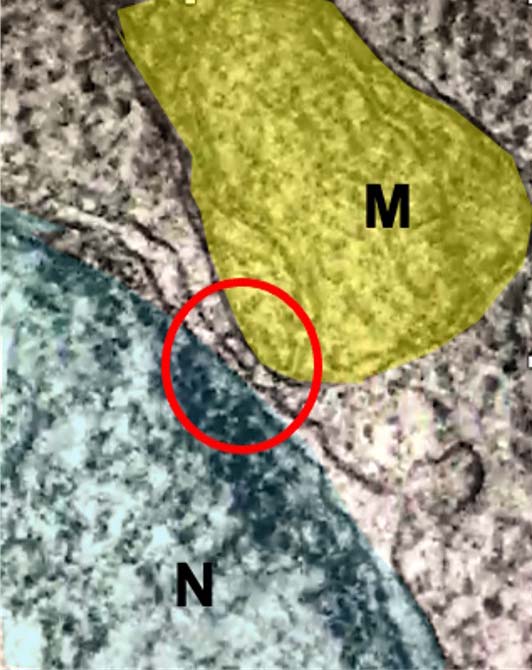21 Dec 2020
Study led by vet school finds new interaction within cells that could lead to novel therapies for conditions in humans and animals being developed.

A new RVC study has found an interaction within cells that could lead to the development of novel therapies for pathological conditions such as cancer and neurodegeneration in both humans and animals.
The vet school said discovery of a direct interaction between mitochondria and nuclei through membrane contact sites expands the understanding of mitochondrion-to-nucleus communication and intracellular signalling.

In mammals, mitochondria are vital organelles acting as primary sources of energy. They are the most successful example of endosymbiosis, the process where eukaryotic cells host a prokaryote with membrane bound nucleic acid, and play a part in several key processes spanning hormone synthesis and programmed cell death.
Despite the successful integration, they retain their own DNA, making the interplay with the nucleus – which contains the genomic DNA – a key aspect in the homeostasis of cells and tissues.
It had previously been thought mitochondria communicate to the nucleus alterations in the cellular environment to increase the transcription of genes involved in the preservation of mitochondrial and cellular function.
This process, which is known as mitochondrial retrograde response (MRR), is ascribed to the deregulation of several pathologies, including cancer and neurodegeneration.
A team led by Michelangelo Campanella – chairman in pharmacology, and head of the Mitochondrial Cell Biology and Pharmacology Research Unit at the RVC – used breast cancer cells of different stages of aggressiveness isolated from humans, dogs and cats.
In the three species, the evolution of cancer of the mammary gland (for example, breast cancer) meant their susceptibility to chemotherapy was proven to be associated with the degree of contact sites between mitochondria and nuclei.
Cutting-edge techniques of fluorescent imaging enabled the team to map the dynamic nature of the interaction and transmission electron microscopy to picture the ultrastructure of nucleus-associated mitochondria (NAM).
The team’s breakthrough demonstrates MRR is mediated by specific points of contact within the NAM. The discovery of discrete anatomic compartments offers the possibility to target these selectively and regulate this inter-organelle communication, paving the way for new and improved strategies to impact diseases.
Prof Campanella said: “This study is the first of its kind to unveil the association between the mitochondrion and nucleus to be a regulated process, and can be used to identify how this interplay can be pharmacologically controlled.
“The impact of this discovery is likely bigger than the advanced comprehension of mammalian cells physiology and pathology, embracing aspects of evolution.
“Our research group has now started investigating the molecular determinants of membrane tethering at NAM and the involvement of these inter-organellar communication in several disease models. This is truly groundbreaking as it will allow us to develop ways of correcting mitochondrial signalling in pathological conditions, including cancer and neurodegeneration.”
The research was funded by the Biotechnology and Biological Sciences Research Council, Petplan Charitable Trust and the European Research Council.